Going Back to School With Stations
At the middle school and secondary levels, the first day of school typically consists of teachers introducing themselves, going over the syllabus and students completing get-to-know-you activities or ice breakers. I’ll admit, I have also used a similar format until I realized that this doesn’t show my incoming students what our classroom will look like, sound like and feel like throughout the school year.
Utilizing stations the first week of school sets the tone for the school year. It shows your students that your classroom will be filled with student voice, collaboration, engagement and movement. Stations are also a great way for students to get to know one another in a smaller and more comfortable setting and for teachers to learn about their new students. As students work through stations, you will typically find me walking around, engaging with students and learning their names.
Below are some station ideas for the first week of school.
“Student Survey” station
Learn about your students’ interests, hobbies, learning styles, etc. with the student survey. This survey is available in paper or digital format and serves as a great tool for relationship and community building, allowing teachers to refer to the information throughout the school year and connect with their students.
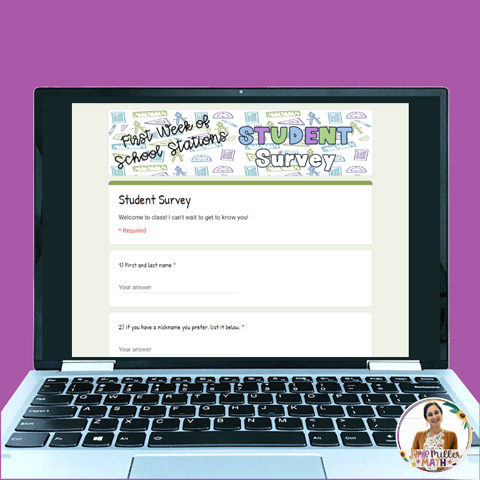
“All About Expectations” station
Students create five class expectations they have of their classmates, themselves and their teacher(s). You can then use this activity to generate a whole-group discussion where you come up with norms in regards to expected behaviors, ensuring a collaborative and respectful classroom.
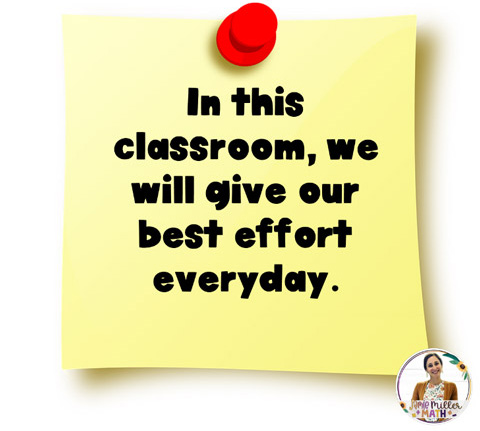
“Graphing Calculator Scavenger Hunt” station
Students work through a scavenger hunt as they learn the basic features of the TI-84 Plus CE Python graphing calculator. The scavenger hunt serves as an excellent tool for students to reference throughout the year.
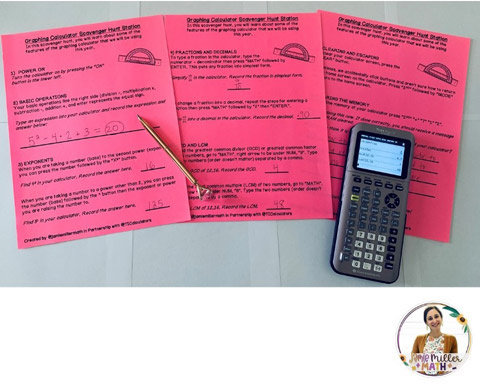
“Syllabus Quiz” station
Students explore the class syllabus, and discover classroom procedures, routines, etc. Students will then complete a Google form quiz to demonstrate that they understand the syllabus, procedures, routines, etc. Finally, students will sign and return the form for homework.
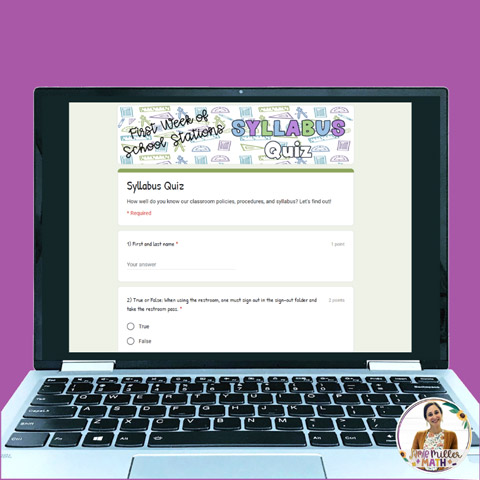
“Birthday Coding Fun” station
Students will learn the basics of coding on the TI-84 Plus CE Python graphing calculator as they create a program that will enable a classmate to guess their birthdate.
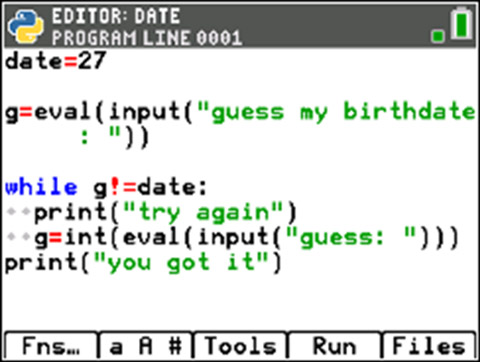
Grab the station activities here.
By starting the year off with station activities, you can set the stage for the rest of the school year. As mentioned earlier, stations can also be used to form class norms, meaning what behaviors we want to see and what we want students to do in our classrooms. You can use class norms to guide learning and exploring.
As students work through station activities, I snap pictures of individuals and partners or groups working well together, write down quotes that I hear (students helping one another, encouraging one another, etc.), and I also write down things that I like (volume level, proximity when working together, eye contact, etc.). At the end of the class period, I have students brainstorm the question: “What does station work in math class look like and sound like?” We think about and discuss what we like to see or hear in station work and what we don’t like to see or hear in station work. We use our reflection and discussion to create an anchor chart that has our group norms and is constantly referenced throughout the year.
Want to learn more about creating class norms? Check out this blog post.
In conclusion, utilizing stations the first week of school sets the tone for the school year, especially if you use learning centers or stations routinely. And, establishing class norms allows you to build relationships and a strong classroom community. Wishing you all a wonderful school year!
About the author: Jamie Miller has taught grades three through seven, but seventh grade math might just be her favorite. She is passionate about using a math workshop model to individualize instruction and reach all learners, and she promotes a positive learning environment while encouraging students to actively engage in their learning. Miller is the creator of Jamie Miller Math, which provides teachers with fun and engaging resources for middle school math teachers. Check out her website, Jamie Miller Math – Fun and Engaging Activities for Middle School Math, or follow her on Instagram @jamiemillermath.
Tagcloud
Archive
- 2025
- 2024
- 2023
- 2022
-
2021
- January (2)
- February (3)
- March (5)
-
April (7)
- Top Tips for Tackling the SAT® with the TI-84 Plus CE
- Monday Night Calculus With Steve Kokoska and Tom Dick
- Which TI Calculator for the SAT® and Why?
- Top Tips From a Math Teacher for Taking the Online AP® Exam
- Celebrate National Robotics Week With Supervised Teardowns
- How To Use the TI-84 Plus Family of Graphing Calculators To Succeed on the ACT®
- AP® Statistics: 6 Math Functions You Must Know for the TI-84 Plus
- May (1)
- June (3)
- July (2)
- August (5)
- September (2)
-
October (4)
- Transformation Graphing — the Families of Functions Modular Video Series to the Rescue!
- Top 3 Halloween-Themed Classroom Activities
- In Honor of National Chemistry Week, 5 “Organic” Ways to Incorporate TI Technology Into Chemistry Class
- 5 Spook-tacular Ways to Bring the Halloween “Spirits” Into Your Classroom
- November (4)
- December (1)
-
2020
- January (2)
- February (1)
- March (3)
- April (1)
- May (2)
- July (1)
- August (2)
- September (3)
-
October (7)
- Tips for Teachers in the time of COVID-19
- Top 10 Features of TI-84 Plus for Taking the ACT®
- TI Codes Contest Winners Revealed
- Best of Chemistry Activities for the Fall Semester
- Best of Biology Activities for the Fall Semester
- Best of Physics Activities for the Fall Semester
- Best of Middle Grades Science Activities
- November (1)
- December (2)
- 2019
-
2018
- January (1)
- February (5)
- March (4)
- April (5)
- May (4)
- June (4)
- July (4)
- August (4)
- September (5)
-
October (9)
- Art in Chemistry
- Which Texas Instruments (TI) Calculator for the ACT® and Why?
- Meet TI Teacher of the Month: Jessica Kohout
- Innovation in Biology
- Learning With Your Students
- A first-of-its-kind STEM strategy charts path to help educators
- #NCTMregionals Hartford 2018 Recap
- The Math Behind “Going Viral”
- Real-World Applications of Chemistry
-
November (8)
- Testing Tips: Using Calculators on Class Assessments
- Girls in STEM: A Personal Perspective
- 5 Teachers You Should Be Following on Instagram Right Now
- Meet TI Teacher of the Month: Katie England
- End-of-Marking Period Feedback Is a Two-Way Street
- #NCTMregionals Kansas City 2018 Recap
- Slope: It Shouldn’t Just Be a Formula
- Hit a high note exploring the math behind music
- December (5)
- 2017
- 2016
- 2015
